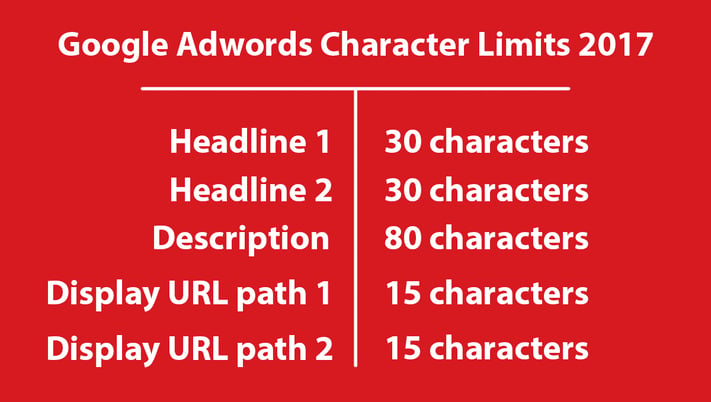.png?width=711&height=300&name=R%20(1).png)
Pay per click advertising is a great way to create brand awareness and generate leads - we’ll walk you through the steps of setting up your first campaign.
Pay per click (PPC) advertising can add great value to your marketing strategy.
With PPC you drive traffic to your website by paying search engines and social media sites to display your adverts to target audiences. This will help you generate qualified leads, as you’re reaching buyers when they’re actually looking to purchase. How do we know this? Well, because they searched for your product, of course!
If you’re a complete newbie to PPC, I recommend you first have a read of my previous post, PPC 101 (the pay per click beginner’s guide), to familiarise yourself with the terminology used in PPC advertising. The PPC landscape is constantly evolving and that’s why it can be hard to wrap your head around all the PPC jargon if you’ve never worked with PPC advertising before.
Once you’re ready to get started on your first campaign, there are five simple steps which will give your PPC ads a solid foundation for success.
1. Do your homework
First off, you’ll want to establish the objective for your campaign - do you want the person clicking on your ad to download a whitepaper, phone you for a quote or purchase something from your online store? You need to make sure you’ve set a clear objective for your campaign.
Let’s imagine you’re a mechanic and your goal is to get people to download your ebook on servicing your car so you can gather information from potential leads.
Once you have a clear objective in mind, you need to identify your target audience. Who is likely to want to service their car? You will need to create a buyer persona (if you don’t already have one) which is a semi-fictional representation of your ideal customer. You’ll look at demographics like age, gender and income as well as other preferences - like do they use a laptop, tablet or mobile to search for products or services? HubSpot has a great guide to creating buyer personas if you’re not sure how to do this.
You’ll then need to establish where your buyer persona finds their information. This will determine which platforms you’ll use for paid advertising. Are you only going to run your PPC campaign on search engines like Google and Bing or will you be including social media in your strategy? If you’re going to advertise on social media, you must find out which platforms your buyer persona uses (e.g. Facebook, Twitter or LinkedIn).
After you’ve determined who you’re targeting and where you’ll find them, set yourself a budget. If you have a limited budget, you should stick to specific keywords that directly align to your service or product offering. If you have a larger budget, you could take a few risks on some broader keywords.
2. Plan your keywords
The second step is to perform keyword research and to plan a list of keywords for your campaign. Write down a list of 20 to 30 keywords that you think your buyers would use to search for your product (e.g. car maintenance, car services in Johannesburg, servicing my car, etc.). Don’t forget to use both plural and singular phrases to cover all possible options.
Try using a tool like Google’s keyword planner to see which keywords are relevant. Keyword planners allow you to see what your audience is actually searching for, this eliminates guesswork.
There are also various other tools that you can use to analyse search volumes for your keywords, and get suggestions for other possible phrases, like:
3. Create your campaigns and adgroups
When you’re creating your campaign (e.g. within Google AdWords), you’ll be asked to create campaigns or adgroups. Essentially, these are folders and subfolders which will contain your ads and keywords. You can have as many campaigns or adgroups as you need - for example if you have five products, you could have five campaigns with four adgroups per campaign. It all depends on the number of keywords you plan to bid on.
It’s important to organise your campaigns and adgroups in a way that makes sense to you - so group similar keywords together.
Here are some ways to divide up your keyword list to help keep your adgroups organised:
- Location
- Product / service type
- Brand
- Target audience
- Match type (broad match, modified broad match, phrase match or exact match)
You’re able to go back and adjust these campaigns and adgroups at a later stage - so don’t worry if it’s not perfect just yet. This stage of your campaign is all about testing what works - after you’ve run your first campaign, you’ll need to analyse its performance and replace keywords that aren’t performing well. PPC advertising is about continuous analysis, trial and error. Once you get into the rhythm of things, you’ll find you’ll quickly be able to identify what’s working and what’s not.
4. Write your copy
After you’ve set up adgroups and campaigns, you’ll need to write some copy using the keywords from these groups. Remember, you have limited space to create your ad, so make sure you keep it short, punchy and engaging. Here’s an example of the anatomy of a Google AdWords ad:

Make sure your copy is:
- Informative and relevant
- Engaging
- Free from spelling and grammatical errors
- Includes your core keywords
- Active, not passive voice
- Emphasise customer benefits
- Contains a clear call to action (CTA) - what should the customer do next? (e.g call for a quote)
5. Make sure you’ve created landing pages
The final step (and without a doubt the most important one) is to create excellent landing pages. Don’t go live with your campaigns until you’ve optimised your landing pages for conversions.
| A landing page is the page that your buyer is redirected to when they click on your ad. |
The landing page must be relevant to the ad - so if your CTA is to download an ebook, make sure your ad directs buyers to the page where they can download the ebook and not just to a generic “about us” or “home” page. Directing your buyers to a generic page will create a frustrating user experience and increase your bounce rate (which ultimately affects your quality score). Again, if your CTA is to “call us” make sure you use an ad extension, allowing mobile users to call you directly from your ad.
If you’re not sure what to put on a fully-optimised landing page, have a look at HubSpot’s post, 16 of the Best Landing Page Design Examples You Need to See in 2017. This will give you an idea of how to use landing pages.
Now that you’ve set up your first PPC campaign, and you’ve created landing pages that are fully-optimised and ready for conversions, you can go live and test your results. Be sure to regularly analyse the performance of your campaigns and adjust keywords where necessary. Ultimately, you’ll want to narrow your keyword list down to between four to five of the top performing keywords.
For more great marketing and advertising insight, sign up to our blog.




SUBMIT YOUR COMMENT